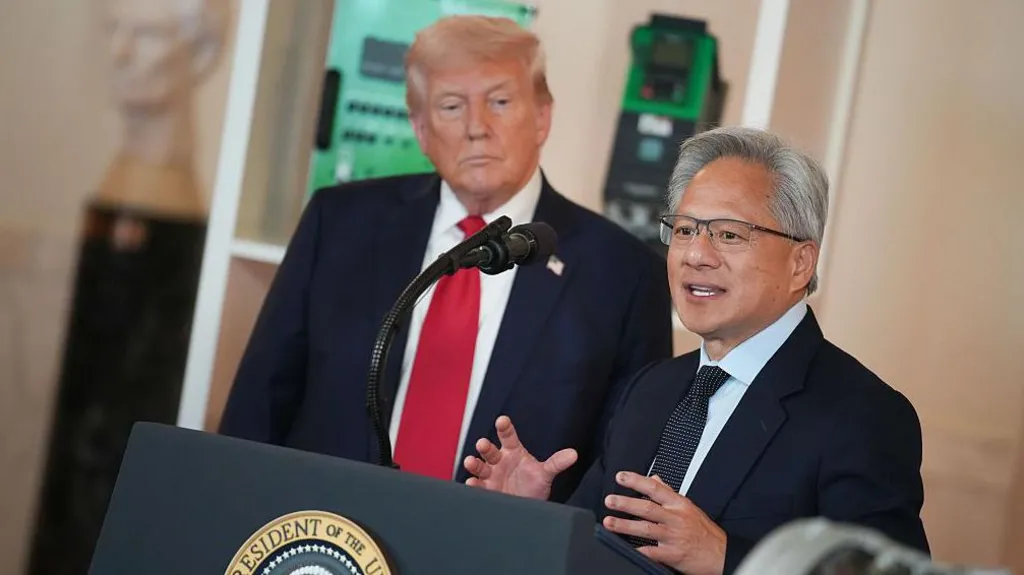Reasons for India to Participate in China’s Belt and Road Initiative
We live in an age when the world is more interconnected and interdependent than at any other time in human history. This trend is not only irreversible, but it is also destined to become more dominant in shaping the future of humanity.
In this age, regional connectivity and cooperation have emerged as the most assured ways of promoting a nation’s — indeed, the entire region’s — development, prosperity and even security. When nations enjoy the benefits of mutual dependence and cooperation, they view each other less as a threat and more as a partner.
Europe learnt this lesson soon after the end of World War II, and hence became a zone of peace and progress. Association of Southeast Asian Nations (Asean) countries also employed this lesson, which helped many of them develop rapidly. For proof, look at ‘Asian Tigers’ Singapore, Malaysia, Indonesia and Vietnam.
Right now, the country that is pursuing connectivity and cooperation with unmatched ambition and scale, not only regionally but globally, is China. Through its Belt and Road Initiative (BRI), it is building connectivity and cooperation networks not only in Asia (a vast land mass of 48 countries with a population of 4.8bn, which is 60% of the global population), but also in Africa, Europe and distant Latin America.
True, BRI has suffered some setbacks since its launch in 2013. This is only natural for any pioneering project of high complexity. But don’t fall for the Western propaganda against it. As many as 152 countries attended the third BRI summit in Beijing in October. The number of countries that have exited BRI is less than six.
How China is integrating its neighbourhood
Neighbourhood connectivity and cooperation is the best test for the soundness of a nation’s foreign policy. China shares land borders with the highest number of countries in the world (14) — Afghanistan, Bhutan, India, Kazakhstan, North Korea, Kyrgyzstan, Laos, Mongolia, Myanmar, Nepal, Pakistan, Russia, Tajikistan and Vietnam.
It has so far settled and demarcated boundaries with 12 of them, India and Bhutan being the only exceptions. China and Bhutan too will soon resolve their boundary dispute and establish diplomatic relations.
China’s regional connectivity, trade, business and people-to-people links are steadily growing with most of its neighbours. Two of its provinces where the benefits of this strategy are most strikingly visible are Xinjiang in its far west and Yunnan in its far south.
I visited Xinjiang in June and saw its amazing transformation. From poverty, backwardness and isolation until a few decades ago, it is now becoming China’s next Shenzhen, its future hi-tech gateway to Central Asia, Eurasia and even parts of West and South Asia.
I witnessed an even more dramatic transformation in Yunnan, when I visited it in the second week of November. Yunnan is one of China’s less developed provinces, just as Bihar is in India. Both are land-locked. However, with a population (47mn) that is less than half of Bihar’s (125mn), Yunnan has a gross domestic product ($428bn) that is more than four times higher than that of Bihar ($94bn).
Kunming, the capital of Yunnan, scores far above not only Patna but most other state capitals in India — in the quality of urban infrastructure; purity of air, water and other environmental standards; safety of citizens; hi-tech industries; universities and research and development centres; exports; and tourist arrivals.
BRI has come as a boon to Kunming. It now boasts of a bullet train connectivity to neighbouring Laos. One of the poorest countries in Asia, Laos is modernising rapidly. I travelled by this train from Kunming to Mengla, a small but beautiful town on the China-Laos border. In speed (above 300km/h) and comfort, I found this bullet train experience much better than any in Europe. China now plans to extend the bullet train network to Cambodia, Vietnam, Thailand and Malaysia, before ending up in Singapore.
Here is another example of how regional connectivity is helping less developed countries in Southeast Asia. In October, Cambodia inaugurated a beautiful new international airport at Siem Reap, which was built by China. Siem Reap is where Angkor Wat, the world’s largest Hindu-Buddhist temple (constructed in 1113 AD), is located. This ‘Eighth Wonder of the World’ will surely attract tens of thousands of Indian tourists to Cambodia, a neighbour of Thailand, which is a major tourist destination.
Where is South Asia in terms of train, air and road connectivity? Sadly, there aren’t even direct flights between India and Pakistan, as also between Pakistan and Bangladesh.
China’s ‘Kunming Dialogue’ with South & Southeast Asia
What took me to Yunnan was a conference (called ‘Kunming Dialogue’) organised by the International Department of the Communist Party of China (IDCPC) on strengthening China’s relations with South Asian and Southeast Asian countries. Besides scholars and writers, it was attended by prominent leaders of political parties from all these countries — except India. I was the lone Indian participant, voicing my thoughts as an independent political activist.
IDCPC had posed two questions for the dialogue. First: “How should we perceive the new changes in the US’ policy towards Asia and its impact on the regional situation?” Second: “How can Asia break free from the trap of competitive narratives and construct a narrative that fosters consensus for regional and global cooperation and development?”
I expressed five thoughts at the conference.
One: Asia is rising, and all of us in Asia should accelerate the process of the rise of Asia. Within Asia, every single country should rise. It is not enough if only China rises or only India rises. Every small and poor Asian country should rise.
All of us belong to Asia, which is our common home. Therefore, we need to recreate and further strengthen our common Asian identity, based on Asian solidarity and Asian cooperation.
Asian identity and Asian solidarity can be best strengthened by maximising development cooperation, people-to-people contacts, cultural bonds and media-academia cooperation.
Two: Narratives about Asia are largely set by the media. It is the media that influences people’s perceptions about each other. Sadly, we see a worrisome mismatch here.
Even though Asia’s economic clout is rising, Asia’s voice in the global media and global academia remains weak and fragmented. In contrast, the US and Europe continue to dominate the media, academia and the overall narrative-setting ecosystem. We even get news about other countries in Asia from Western sources. Therefore, Asian countries should make concrete and collaborative efforts to end this Western media domination, and begin to see Asia with Asian eyes.
Three: Asian solidarity cannot be exclusive. Asia should take the lead in promoting global solidarity. It is not enough if only Asia rises. Africa should rise and Latin America should also rise.
Furthermore, our approach should not be ‘Asia vs the West’. Rather, it should be ‘Asia together with the West — but on equal terms’. More collaborative efforts are needed to create a believable narrative around this concept, so that harmonious East-West, South-North ties become an attractive promise in the manifesto for Asia’s rise.
Four: There is a need to develop the idea of a new security architecture for Asia, which is inclusive. It should guarantee: ‘Security for all and insecurity for none.’
China, as the largest country in Asia — both in terms of size and economic-military power — has the greatest responsibility in reassuring and credibly convincing its neighbours that it poses no security threat to them. This is important because many people in India, including political parties, see China as a threat. Surely, China has a lot of work to do to dispel this perception.
India also has a responsibility. It must maintain a policy of independence, and not be seen as an ally of the US in containing and countering China. Quadrilateral, AUKUS, Pivot to Asia, Asian Nato, etc, are desperate attempts by the US to perpetuate its global hegemony and make Asia a new theatre of confrontation between rival blocs. India should stay away from America’s geopolitical designs in Asia.
We must once and for all end the political, economic and military domination of the West. This is a precondition for the rise of a new, better, fairer, more equitable and more democratic world order in the 21st century. A new harmonious world order in which there is no hegemony by any country. A world without enemies and rival blocs. A world in which all countries and peoples are equal partners living in friendship and cooperation.
Five: BRI cannot achieve optimal results in Asia without India’s participation. Similarly, India cannot advance much in Asian connectivity and cooperation by remaining out of BRI.
Therefore, some new, innovative, bold and win-win ideas should be jointly explored by India, China and other regional countries that would pave the way for India to join the BRI as an equal partner. Similarly, China too should join India’s connectivity and cooperation projects.
Specifically, there should be no further delay in implementing the Bangladesh-China-India-Myanmar (BCIM) Corridor that connects Kunming to Kolkata (K-to-K). This corridor should be extended westwards to connect Karachi in Pakistan, Kabul in Afghanistan and Kashgar in China’s Xinjiang — (K-to-K-to-K-to-K-to-K).
Why should we not envisage a future in which a bullet train of development can run all the way from Singapore to Central Asia, passing through China, India and other countries along the way?
Asia needs it. It’s time for Asia to think big.
For such cooperation to happen, India and China should show sensitivity to each other’s concerns, apprehensions and legitimate aspirations. Indeed, as the two most populous countries in the world, and as inheritors of the two great and ancient neighbouring civilisations, India and China should together resurrect the wisdom of our civilisations for transforming our bilateral relations, as well as for a new and better future for Asia and the world.
Nothing is more reassuring to Asia and the world, and nothing can make a greater contribution to the emergence of a new and better global world order, than India-China good-neighbourliness and comprehensive cooperation.
The conference gave me an opportunity to interact with several top officials of the Chinese government, including minister Liu Jianchao, who heads IDCPC. A veteran and highly articulate diplomat, he told me, “Regional cooperation is proceeding well in almost all parts of Asia. Even Saudi Arabia and Iran have begun to normalise relations. The only exception is South Asia. This region lags behind in both connectivity and economic integration. China wants this to change. We are ready to cooperate with India and other regional countries on a win-win basis for all. China can dispel any doubts and reservations India may have.”
New Delhi, in India’s own national interest, should respond positively to this offer of dialogue and cooperation from Beijing.











